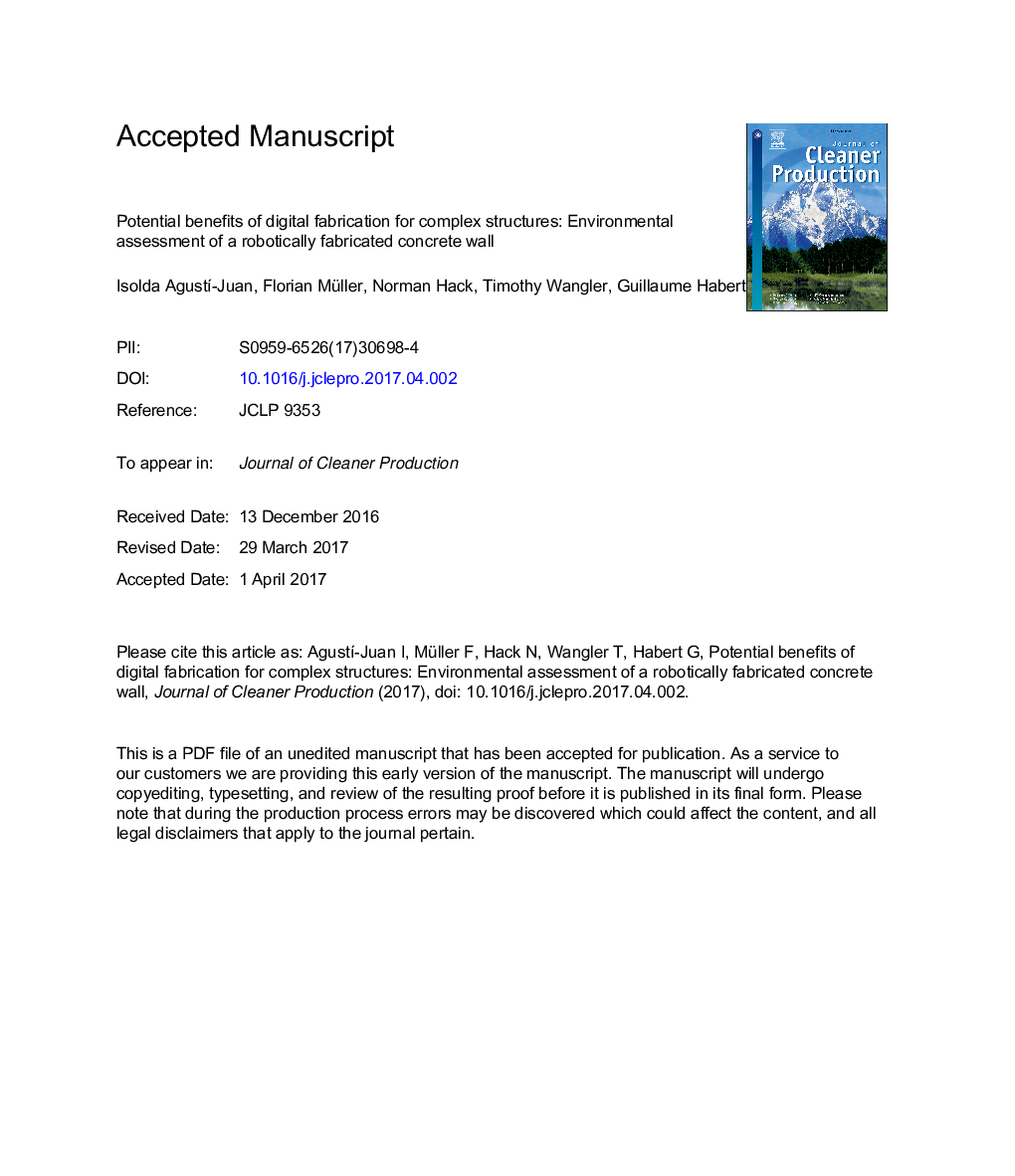| Article ID | Journal | Published Year | Pages | File Type |
|---|---|---|---|---|
| 5479745 | Journal of Cleaner Production | 2017 | 25 Pages |
Abstract
Digital fabrication represents innovative, computer-controlled processes and technologies with the potential to expand the boundaries of conventional construction. Their use in construction is currently restricted to complex and iconic structures, but the growth potential is large. This paper aims to investigate the environmental opportunities of digital fabrication methods, particularly when applied to complex concrete geometries. A case study of a novel robotic additive process that is applied to a wall structure is evaluated with the Life Cycle Assessment (LCA) method. The results of the assessment demonstrate that digital fabrication provides environmental benefits when applied to complex structures. The results also confirm that additional complexity is achieved through digital fabrication without additional environmental costs. This study provides a quantitative argument to position digital fabrication at the beginning of a new era, which is often called the Digital Age in many other disciplines.
Related Topics
Physical Sciences and Engineering
Energy
Renewable Energy, Sustainability and the Environment
Authors
Isolda AgustÃ-Juan, Florian Müller, Norman Hack, Timothy Wangler, Guillaume Habert,
